Real Madrid’s Club World Cup Reviewed: Tactical experimentation and harsh lessons learnt
The newly expanded FIFA Club World Cup became the stage for Xabi Alonso’s first matches in charge of Real Madrid. They certainly didn’t fare badly with a run to the semi-final, but the manner of their four-goal defeat to Paris Saint-Germain still leaves a bitter taste in the mouth for fans, even a week on. More importantly, though, they will want to take away some key lessons from this tournament and come back stronger for the 2025/26 season.
By Neel Shelat
As far as first tournaments go, Xabi Alonso could not have asked for something much better than the FIFA Club World Cup to start off his coaching tenure at Real Madrid. As ever, it was a tournament Los Blancos were aiming to win, but the pressure was not overwhelming. They also got to face a variety of opposition in the shape of teams from three different continents, including some European giants. While the manner of their defeat to Paris Saint-Germain in the semi-final was quite disappointing, their final record of four wins, a draw and a loss looks perfectly fine on paper. Beyond the results, this was a great platform for Alonso to try out some different tactics and assess his squad.
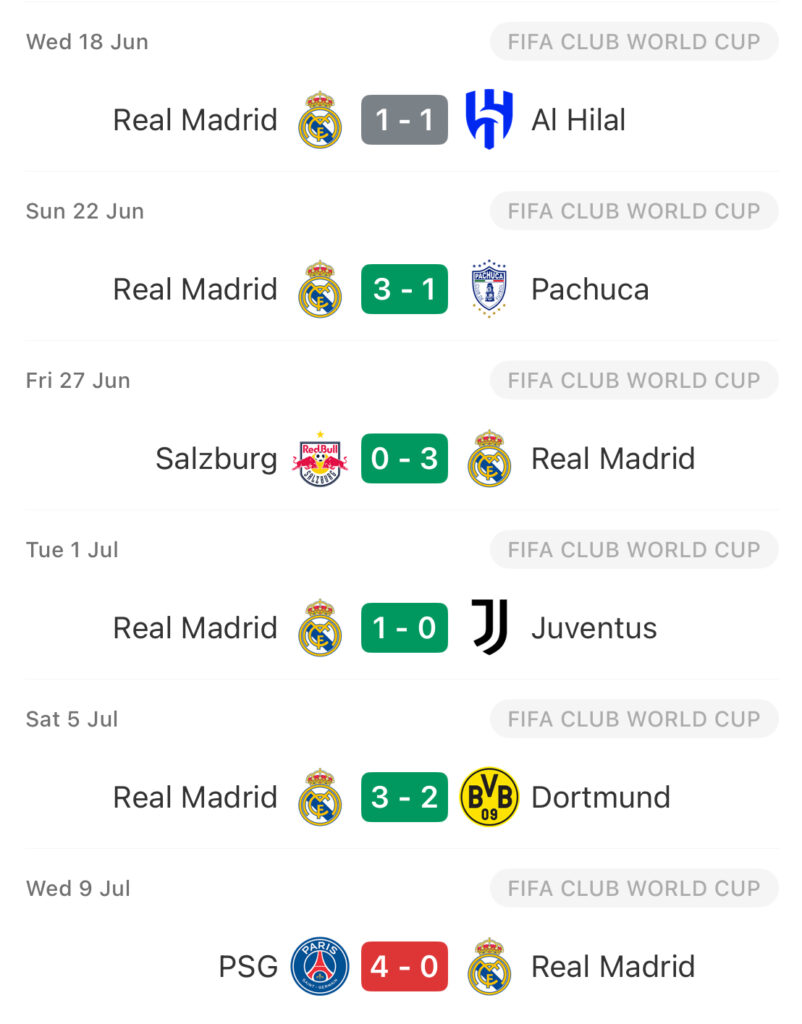
Tactical experimentation
Before getting into the different tactical ideas Real Madrid tried out at the Club World Cup, it is worth caveating everything by noting that Xabi Alonso is yet to have a proper pre-season training camp to really shape the team in a way that he wants. He was appointed just a couple of weeks ahead of the tournament, so he had to point out that “Everything has been sped up a lot, because we have very little time to get to know each other”, on arriving in the United States. Of course, during the tournament, they only really had time to rest and prepare for the next opponent with games every four or five days. So, the team that takes the field against Osasuna in their 2025/26 season opener might look quite different, but Alonso and his staff can assess and come up with key takeaways from the things they tried out in the States.
It is also important to mention that not all players were available for selection going into the tournament. Dani Carvajal and Éder Militão were still recovering from their long-term injuries, Eduardo Camavinga, Endrick and Ferland Mendy had issues of their own and Kylian Mbappé was hospitalised with a stomach virus. Further changes of availability during the tournament played their part in forcing Alonso’s hand to switch things up tactically.
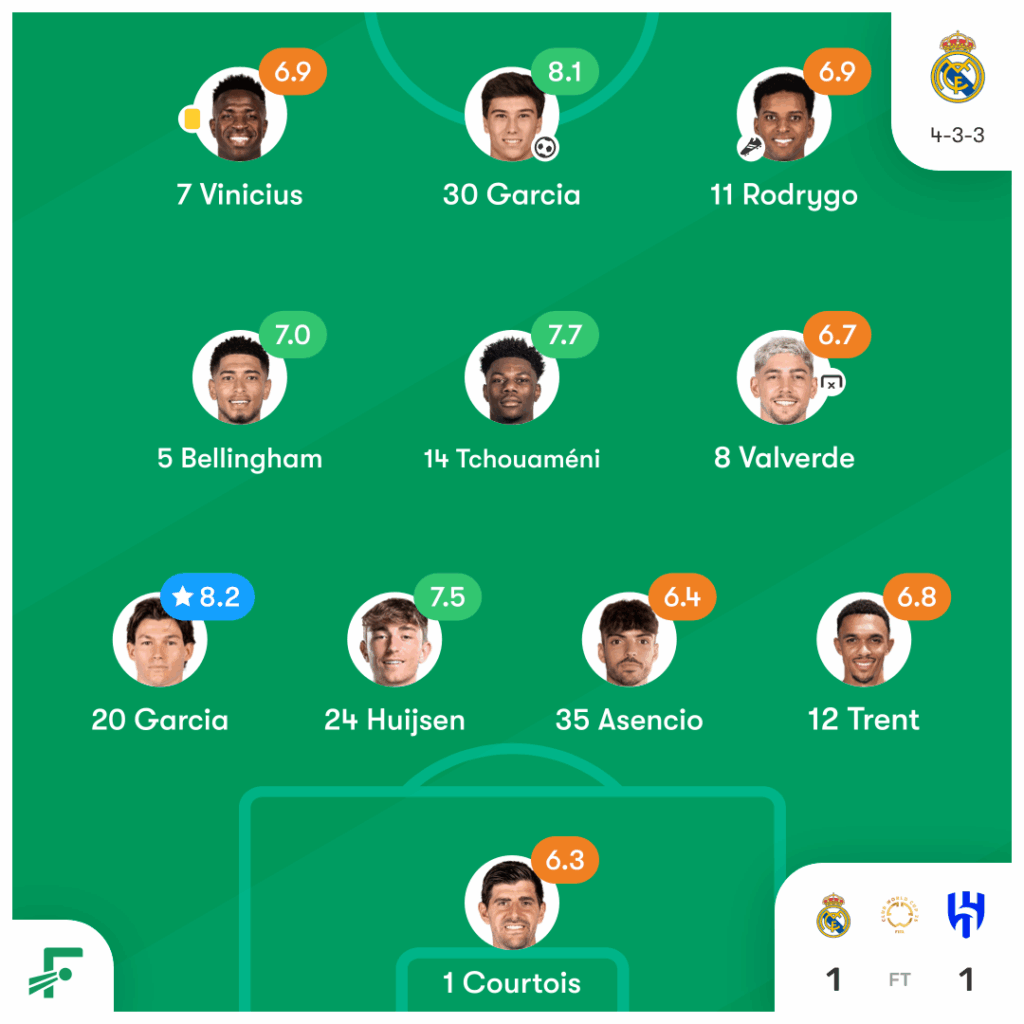
Real Madrid started the tournament off with a rather subpar performance in a 1-1 draw against Asian giants Al Hilal. They lined up in a 4-3-3 formation on paper but moved to more of a 3-2-2-3 in possession, with new signing Trent Alexander-Arnold given the freedom to drift around in more central areas just as he used to do at Liverpool. Although they improved in the second half after a bit of an attacking rejig, Los Blancos lacked sharpness in the final third overall besides looking shaky at the back.
Those defensive issues were laid bare just minutes into their subsequent match against Pachuca with a red card for the denial of a clear goal-scoring opportunity. Thankfully for them, they managed to control the game with the ball and made their individual superiority count in a 3-1 win. A failure to get all three points would have put Real Madrid under serious pressure going into their final group game, but they still needed to see out a draw at least to ensure progression to the knockouts. They managed to come away with a convincing 3-0 win against Salzburg, where the most interesting tactical aspect was Aurélien Tchouaméni’s hybrid role in defensive midfield that saw him drop between the centre-backs both in and out of possession to shore up things at the back.
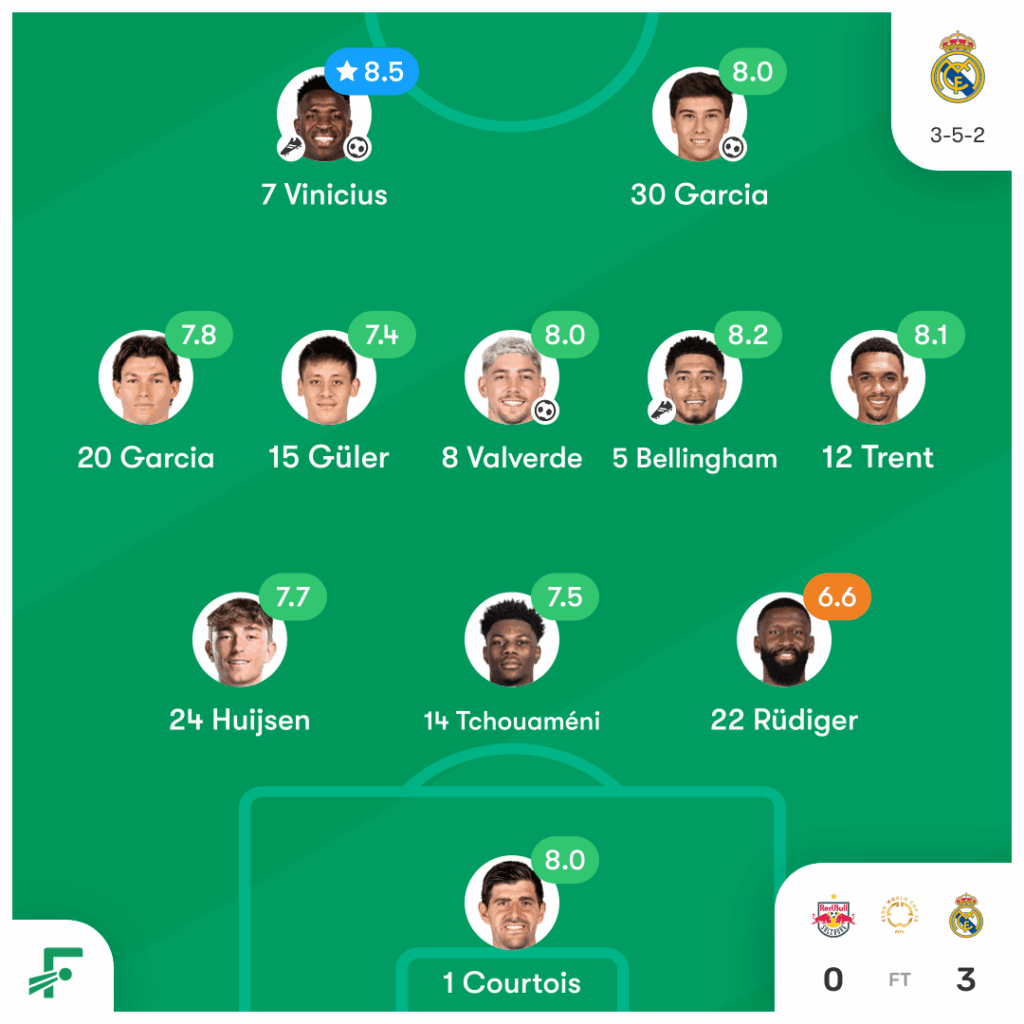
This improved defensive solidity made the difference in their first knockout game against Juventus, in which Tchouaméni fully operated as a central defender in a back three. Real Madrid managed to grind out a one-goal win by scoring from the second phase of a set-piece and giving up very little at their end.
Los Blancos reverted to a back four for the quarter-final against Borussia Dortmund, in which they got off to a fast start with two goals in 20 minutes. They were well in control for the most part, posing a good threat in transition and looking unbothered at the back. However, they found themselves clinging on to a 3-2 win at the end of a chaotic stoppage-time period, in which Dean Huijsen was also sent off. That moment might well have been the beginning of the end of their campaign as the Spanish defender’s absence was certainly felt in the semi-final, but more on that later.
Emerging stars and underwhelming performers
The changes in the squad availability presented some players with a golden opportunity to make a positive first impression on their new head coach. Gonzalo García undoubtedly was the biggest winner as he started the tournament in Mbappé’s absence and never looked back. He was Real Madrid’s best attacker with four goals and an assist, but perhaps more importantly, the flexibility he showed as a striker who can both pose a threat in behind or drop to link up could make him quite a useful profile.
Elsewhere, Arda Güler enjoyed a great tournament, albeit not in the role most might have expected. Instead of starting in the attack, he starred in a free midfield role where he did an excellent job of helping his side get forward through secure receptions and slick passing. Thibaut Courtois made some big saves as usual, and Huijsen looked quite assured for the most part as well.
Raúl Asencio certainly had a tournament to forget as he was consistently exposed in a high line, got sent off in the second match and kicked off the collapse against PSG. Rodrygo did not start a game after the opener and could well be on his way out if rumours are to be believed. Fellow Brazilian winger Vinícius Júnior was underwhelming for the most part, though he did have a couple of standout moments.
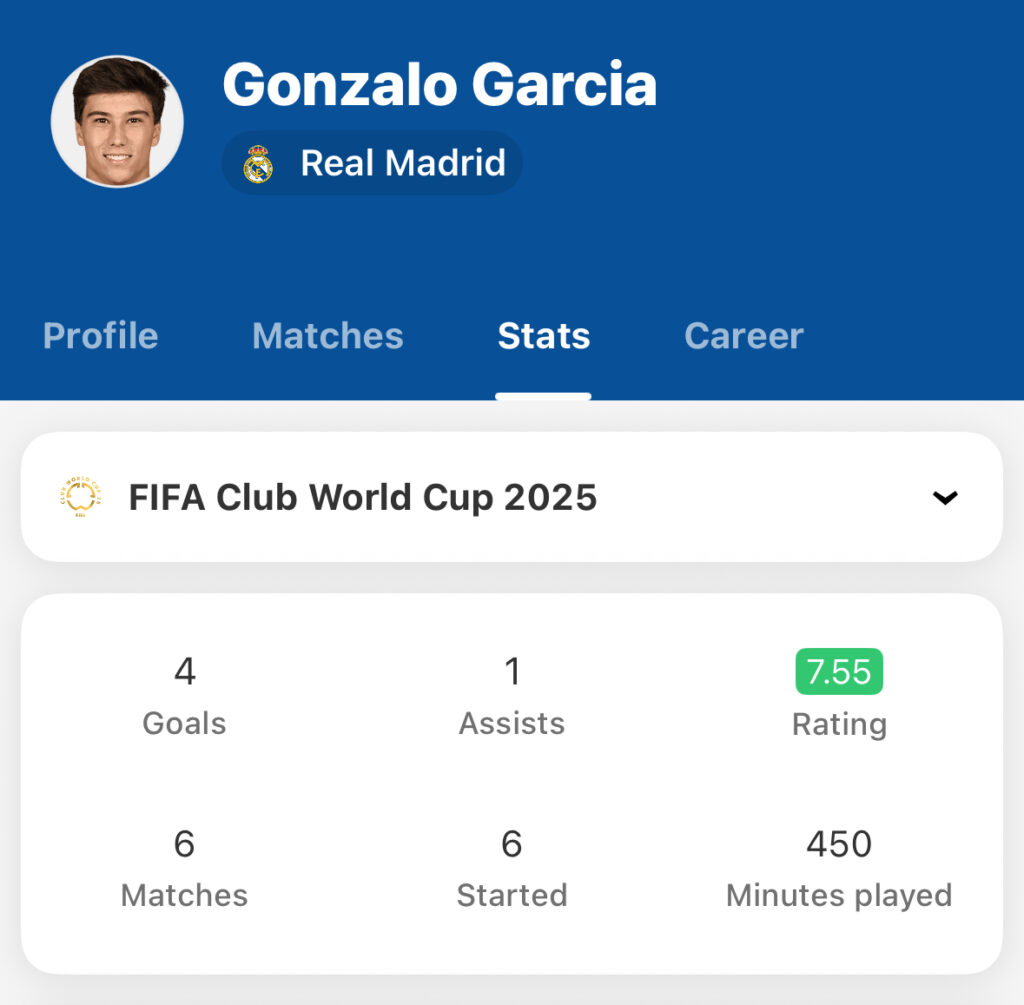
Pressing matters
All things considered, it is quite safe to say that this tournament has reinforced the idea that Real Madrid have more than enough quality and Alonso has ample tactical ideas to put together a formidable attack. The real question, then, is how they will set up without the ball, especially high up the pitch.
Los Blancos started the tournament in a 4-1-3-2 high press in a setup similar to what their coach had sometimes used at Bayer Leverkusen. However, the base of their defence was exposed in duels and against balls in behind, causing them to consistently switch things up thereafter. While they were able to mitigate those issues, a new problem emerged up front in the semi-final with both Vinícius and Mbappé starting. The duo’s lack of intensity out of possession forced Alonso to ask his midfielders to step up and support the press, but PSG skilfully manipulated this approach and took advantage by drawing the midfielders out of position before quickly slicing through. Of course, it was freak individual errors that led to Real Madrid’s early concessions, but their inability to cause problems with their press gave them no real chance of coming back.
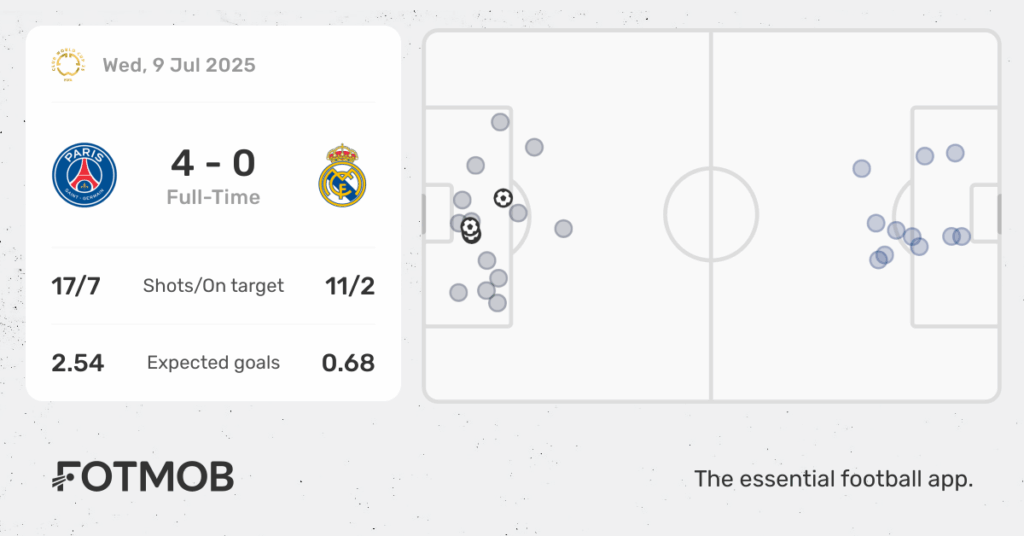
As we have previously written, out of possession issues were the biggest cause of the disappointing end to Carlo Ancelotti’s time at Real Madrid. So, this will naturally be the biggest challenge for Alonso as he heads into the new season. The 4-1-3-2 system might just end up working with better personnel, but he might also have to continue trying to find new solutions. The flexibility he showed at Leverkusen and has consistently spoken of since arriving in Madrid could prove crucial in this regard.
(Cover image from IMAGO)
You can follow every Real Madrid game in the 2025/26 season with FotMob – with deep stats, xG, and players ratings. Download the free app here.